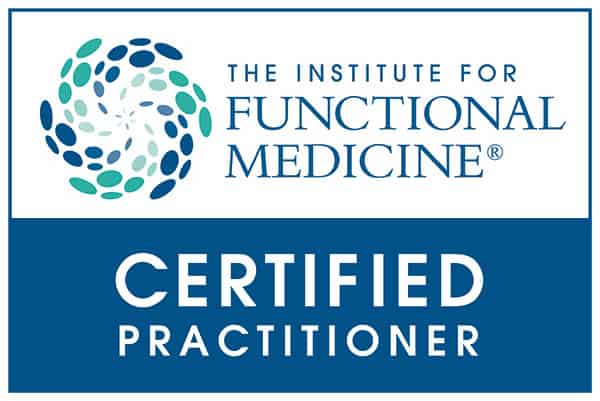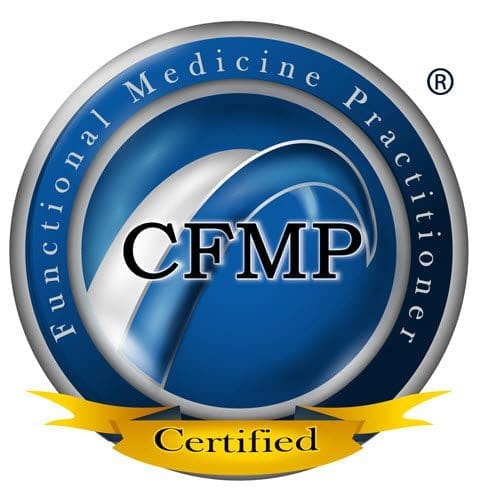Learn about the relationship between migraines associated with neck pain and how to alleviate discomfort through various techniques.
Contents
Introduction
Having a busy day with routine may lead to a number of problems, including headaches, stress, and physical exhaustion in the many parts of the body, including the skeletal system, muscles, and organs. The combination of pain and discomfort may result in overlapping risk profiles linked to long-term problems. Do you, for instance, get headaches that throb in different parts of your brain all the time, making it hard to focus on your task? Does moving your shoulders or neck provide momentary relief from stiffness? Or do you need a dark, quiet environment to feel better because you have sensitive light or sound issues? Many people who have neck discomfort and headaches may also be suffering from migraines that affect their lifestyles. In this post, we’ll examine the relationship between migraines and neck pain, the relationship between migraines and fibromyalgia, and holistic approaches to migraine symptom management.
The Migraine & Neck Connection
When it comes to headaches and migraines, many people will begin to feel tension in their heads from various areas and notice that their neck is stiff. This unilateral pain usually starts in the neck and then is accompanied by a reduced range of motion called a cervicogenic headache that can be confused with a migraine. (Al Khalili et al., 2025) Migraines are often a full-body experience with numerous symptoms that can make anybody’s daily life feel unmanageable. This is because the extra-cranial autonomic nervous system activates the trigeminal autonomic reflex, which is a physiological response that follows harmful stimuli that cause migraines to develop. (Vicente et al., 2023) Additionally, migraines can cause the individual to develop increased pain sensitivity and cervical musculoskeletal impairments like neck pain correlating with environmental factors that lead to its development. (Di Antonio et al., 2023) Many environmental factors can trigger migraines associated with neck pain, including:
- Poor posture
- Cervical spine misalignment
- Muscle tension from stress or overuse
- TMJ dysfunction
- Inadequate sleep
How Fibromyalgia Connects With Migraines
Now, how would fibromyalgia be correlated with migraines for individuals? Since this link is a bit complex, both fibromyalgia and migraines are due to mitochondrial dysfunction that causes the body not to function properly. Fibromyalgia is a condition that causes the central nervous system to be affected chronically and is frequently present with other chronic pain syndromes like migraines. (Janssen et al., 2021) Fibromyalgia is often characterized by widespread pain and heightened pain sensitivity from central sensitization, causing the central nervous system to become hyperresponsive. Migraines are familial, episodic, and complex sensory processing disturbances associated with various symptoms mimicking fibromyalgia. (Aguilar-Shea et al., 2022) However, many individuals with fibromyalgia can experience the following symptoms:
- Intense and frequent migraines
- Musculoskeletal tenderness in the neck and upper back
- Amplified severity and frequency of migraine attacks
When this happens, many people who are dealing with migraines associated with fibromyalgia will seek essential integrative treatments to manage the symptoms and find relief.
Tension Headaches Explained- Video
Holistic & Functional To Reduce Migraine Symptoms
When it comes to looking for treatments that can help reduce migraine symptoms, a holistic functional treatment approach is often the best approach. By incorporating this approach, many healthcare professionals can look beyond and understand the root causes of migraines. Many migraine treatments are cost-effective and non-surgical and can help reduce the pain-like symptoms associated with migraines and help restore neck functionality.
Chiropractic Care & Manual Therapies
When the body is dealing with misalignment from the cervical area of the spine, neck pain and migraines can develop. Many individuals take chiropractic care to help with cervical mobilization and suboccipital release, which reduces tension in the muscles while increasing the range of motion in the neck. Chiropractors utilize manual and mechanical manipulation to help realign the spine and help stretch and strengthen weak muscles. Chiropractors also incorporate myofascial release and MET maneuvers to help release tension and reduce inflammation affecting the body’s soft tissue, especially within the muscles and fasciae, by allowing contraction and relaxation methods to improve somatic dysfunction within the cervical spinal area. (Jara Silva et al., 2022) Additionally, cervical spinal manipulation can be effective by reducing the pain intensity of migraines and improving the symptomatic days when individuals are experiencing migraine associated with neck pain. (Mayo & Keating, 2023)
Postural & Ergonomic Interventions
Many individuals don’t realize that some of the sources that cause their neck pain could be due to everyday motions that can lead to poor posture. Being hunched from looking down at their phones or leaning forward to look at the computer can strain the neck muscles, thus compressing the cervical nerves, leading to migraines and headaches. Incorporating craniocervical exercises can provide beneficial results for individuals with migraines correlated with neck pain, therefore reducing the frequency and improving disability that is affecting the body. (de Almeida Tolentino et al., 2021) When people start doing postural retraining and neck mobility exercises as part of their daily routine, they reduce the chances of migraines returning.
Anti-Inflammatory & Nutritional Support
Migraines can be triggered or worsened by inflammation and blood sugar instability through improper dieting. When it comes to dieting, many individuals can often see that certain foods can trigger different reactions in the body. Certain foods can trigger migraines to develop; however, by figuring out which food causes the triggers that lead to the migraine to establish, many individuals can make various changes in what they eat. Many people are encouraged to try the elimination diet to identify the food trigger causing the migraines and avoid it. (Gazerani, 2020) Hence why, incorporating foods rich in omega-3s can help not only reduce migraine headaches but also reduce chronic inflammation that is affecting the body.
Additionally, many individuals can incorporate magnesium supplements, which can help decrease migraine attacks by altering the neurotransmitter secretion in the central nervous system (Shin et al., 2020). This can help many individuals feel better over time.
Final Thoughts
There is a common route between migraines and neck pain when determining the relationship between the two conditions. Many people might have a personalized treatment strategy to control migraine symptoms and regain neck mobility by comprehending this overlapping link. The objective is to provide patients with resources that will lessen the frequency and intensity of migraines, increase energy, and enhance their quality of life, whether this is accomplished by physical treatments, dietary assistance, or lifestyle modifications.
Injury Medical & Functional Medicine Clinic
We associate with certified medical providers who understand the importance of assessing individuals dealing with neck pain associated with migraines. When asking important questions to our associated medical providers, we advise patients to incorporate numerous techniques to reduce migraines from reappearing and causing neck pain. Dr. Alex Jimenez, D.C., uses this information as an academic service. Disclaimer.
References
Aguilar-Shea, A. L., Membrilla Md, J. A., & Diaz-de-Teran, J. (2022). Migraine review for general practice. Aten Primaria, 54(2), 102208. https://doi.org/10.1016/j.aprim.2021.102208
Al Khalili, Y., Ly, N., & Murphy, P. B. (2025). Cervicogenic Headache. In StatPearls. https://www.ncbi.nlm.nih.gov/pubmed/29939639
de Almeida Tolentino, G., Lima Florencio, L., Ferreira Pinheiro, C., Dach, F., Fernandez-de-Las-Penas, C., & Bevilaqua-Grossi, D. (2021). Effects of combining manual therapy, neck muscle exercises, and therapeutic pain neuroscience education in patients with migraine: a study protocol for a randomized clinical trial. BMC Neurol, 21(1), 249. https://doi.org/10.1186/s12883-021-02290-w
Di Antonio, S., Arendt-Nielsen, L., & Castaldo, M. (2023). Cervical musculoskeletal impairments and pain sensitivity in migraine patients. Musculoskelet Sci Pract, 66, 102817. https://doi.org/10.1016/j.msksp.2023.102817
Gazerani, P. (2020). Migraine and Diet. Nutrients, 12(6). https://doi.org/10.3390/nu12061658
Janssen, L. P., Medeiros, L. F., Souza, A., & Silva, J. D. (2021). Fibromyalgia: A Review of Related Polymorphisms and Clinical Relevance. An Acad Bras Cienc, 93(suppl 4), e20210618. https://doi.org/10.1590/0001-3765202120210618
Jara Silva, C. E., Joseph, A. M., Khatib, M., Knafo, J., Karas, M., Krupa, K., Rivera, B., Macia, A., Madhu, B., McMillan, M., Burtch, J., Quinonez, J., Albert, T., & Khanna, D. (2022). Osteopathic Manipulative Treatment and the Management of Headaches: A Scoping Review. Cureus, 14(8), e27830. https://doi.org/10.7759/cureus.27830
Mayo, Z., & Keating, C. (2023). Manual Therapy and Exercise for the Management of Chronic Neck Pain With Multiple Neurovascular Comorbidities: A Case Report. Cureus, 15(3), e36961. https://doi.org/10.7759/cureus.36961
Shin, H. J., Na, H. S., & Do, S. H. (2020). Magnesium and Pain. Nutrients, 12(8). https://doi.org/10.3390/nu12082184
Vicente, B. N., Oliveira, R., Martins, I. P., & Gil-Gouveia, R. (2023). Cranial Autonomic Symptoms and Neck Pain in Differential Diagnosis of Migraine. Diagnostics (Basel), 13(4). https://doi.org/10.3390/diagnostics13040590
Disclaimer
Professional Scope of Practice *
The information on "Migraines and Neck Pain: Symptoms and Treatment Insights" is not intended to replace a one-on-one relationship with a qualified health care professional or licensed physician and is not medical advice. We encourage you to make healthcare decisions based on your research and partnership with a qualified healthcare professional.
Blog Information & Scope Discussions
Welcome to the wellness blog of El Paso Back Clinic, where Dr. Alex Jimenez, DC, FNP-C, a board-certified Family Practice Nurse Practitioner (FNP-C) and Chiropractor (DC), presents insights on how our team is dedicated to holistic healing and personalized care. Our practice aligns with evidence-based treatment protocols inspired by integrative medicine principles, similar to those found on dralexjimenez.com, focusing on restoring health naturally for patients of all ages.
Our areas of chiropractic practice include Wellness & Nutrition, Chronic Pain, Personal Injury, Auto Accident Care, Work Injuries, Back Injury, Low Back Pain, Neck Pain, Migraine Headaches, Sports Injuries, Severe Sciatica, Scoliosis, Complex Herniated Discs, Fibromyalgia, Chronic Pain, Complex Injuries, Stress Management, Functional Medicine Treatments, and in-scope care protocols.
Our information scope is limited to chiropractic, musculoskeletal, physical medicine, wellness, contributing etiological viscerosomatic disturbances within clinical presentations, associated somato-visceral reflex clinical dynamics, subluxation complexes, sensitive health issues, and functional medicine articles, topics, and discussions.
We provide and present clinical collaboration with specialists from various disciplines. Each specialist is governed by their professional scope of practice and their jurisdiction of licensure. We use functional health & wellness protocols to treat and support care for the injuries or disorders of the musculoskeletal system.
Our videos, posts, topics, subjects, and insights cover clinical matters, issues, and topics that relate to and directly or indirectly support our clinical scope of practice.*
Our office has reasonably attempted to provide supportive citations and has identified the relevant research studies or studies supporting our posts. We provide copies of supporting research studies available to regulatory boards and the public upon request.
We understand that we cover matters that require an additional explanation of how they may assist in a particular care plan or treatment protocol; therefore, to discuss the subject matter above further, please feel free to ask Dr. Alex Jimenez, DC, APRN, FNP-BC, or contact us at 915-850-0900.
We are here to help you and your family.
Blessings
Dr. Alex Jimenez, DC, MSACP, APRN, FNP-BC*, CCST, IFMCP, CFMP, ATN
email: coach@elpasofunctionalmedicine.com
Licensed as a Doctor of Chiropractic (DC) in Texas & New Mexico*
Texas DC License # TX5807
New Mexico DC License # NM-DC2182
Licensed as a Registered Nurse (RN*) in Texas & Multistate
Texas RN License # 1191402
ANCC FNP-BC: Board Certified Nurse Practitioner*
Compact Status: Multi-State License: Authorized to Practice in 40 States*
Graduate with Honors: ICHS: MSN-FNP (Family Nurse Practitioner Program)
Degree Granted. Master's in Family Practice MSN Diploma (Cum Laude)
Dr. Alex Jimenez, DC, APRN, FNP-BC*, CFMP, IFMCP, ATN, CCST
My Digital Business Card








